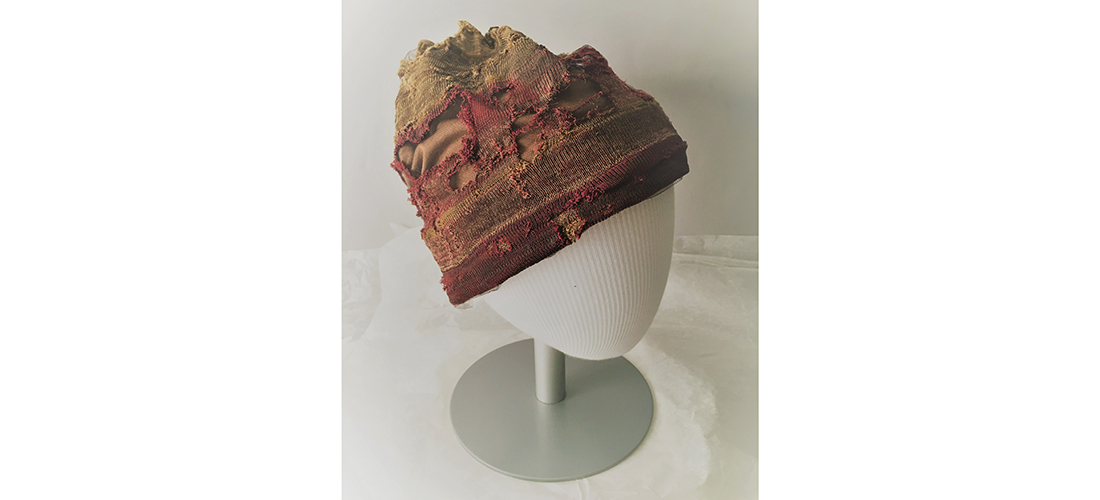
The Liberty Cap
A Greensboro family’s surviving link to the Battle of Guilford Courthouse
By Jim Dodson
“Frankly,” says John Forbis with a laugh, “it’s been in our family so long I never thought much about it when I was growing up — just that it was passed down through many generations in the family. My father kept it in his sock drawer forever before it migrated to a top shelf in his bedroom closet.”
“It” happens to be a simple stocking cap properly known in Colonial days as a “Liberty cap” that belonged to Forbis’s Revolutionary War ancestor, Col. Arthur Forbis.
Local lore holds that Forbis — farmer, family man, church elder and Patriot militiaman — fired the first shot at the Battle of Guilford Courthouse on March 15, 1781. There, a mix of local militia and Continental troops under the command of General Nathanael Greene engaged British General Charles Lord Cornwallis and his troops in a day-long fight that hastened the end of the American Revolution.
Though Cornwallis technically won a pyrrhic victory, he lost a quarter of his troops and was forced to limp to Wilmington in order to rest and refit his exhausted army. Five months later, outnumbered and outfought, the British General surrendered following a three-week siege at Yorktown, Virginia, bringing the war to a close in favor of the Americans.
In 1926, William Forbis, John Forbis’ uncle, presented his Revolutionary ancestor’s sword and knitted stocking cap to the Greensboro History Museum. The cap was probably a homemade affair created from a woman’s loomed silk stocking embroidered with knitted wool, typically worn beneath a soldier’s hat for warmth or a simple reminder of home. It became one of the new museum’s earliest artifacts.
Many years later, the historic cap returned to the possession of the Forbis family until John’s father, Arthur Forbis, was persuaded by the late Bill Moore, the museum’s director, to return it to the museum on permanent loan, where it remains on periodic display to this day.
“It’s provenance is remarkable and tells a wonderful story,” says Susan Webster, the museum’s Curator of Textiles. “According to our colleagues at the Smithsonian, it may be the only surviving Liberty cap in existence that’s fully intact. That makes it not only extremely rare — but a precious possession that connects 11 generations of a local family to one of the most important events in the nation’s history — the fight for our independence.”
Webster explains that the Forbis cap has been intensely researched and debated over the years by a number of leading conservators and textile experts. Careful efforts have been taken to clean and restore sections of its silk fabric. One intriguing aspect of the cap is what appears to be a darkened section of the cap that was believed to be a bloodstain from a wound Col. Forbis received during the battle. Several forensic teams have tested fibers from the stain, but as of yet are unable to confirm or deny it is actually blood.
Arthur Forbis was a father of six children and elder of the Alamance Presbyterian Church, formed in 1762. During the tense days preceding the war, the Piedmont simmered with hostilities between area Tories (loyalists to the Crown) and their Carolina Whig counterparts. In 1775, at age 29, Forbis, credited with being one of the finest marksmen around, joined a local militia formed by Cols. John Paisley and Daniel Gillespie as a captain.
According to both legend and documented accounts, Forbis — who received a battlefield promotion to Colonel during the fight — was in the first line of Greene’s troops with the Guilford militia. Before he was severely wounded in the neck and fell, he brought down a British captain approaching on the Old Salisbury Road.
“The story I always heard as a kid was that he lay on the battlefield for a couple days,” says John Forbis, “until a man he knew named Shoemaker — a Tory sympathizer — found him and ran a bayonet through his leg and side.”
Three days after the battle, as family members began to recover the dead and wounded, the sister of a man who served with Forbis recognized him. She put him on a horse to take him home — only to be met by Forbis’s wife, Bettie, who was making her way to the battlefield.
According to family accounts, Dr. David Caldwell attended the gravely wounded man and suggested amputating his leg, but Forbis refused. He died three weeks later and was buried in the Alamance Presbyterian Church Cemetery, where you can see his gravestone today.
“I heard the story as a boy growing up on our farm over in Alamance County,” says John Forbis, a former Greensboro mayor and lifelong collector of fine antiques and unique historic artifacts. “But having the cap he wore always gave our family a very personal connection to Arthur Forbis, a living link to his incredible story. You can’t place a value on that. To me, it’s priceless.” OH
Do you have a Beloved Possession – priceless or otherwise – that means something important to your family story? We’d love to hear about it and maybe share it with O.Henry’s readers. Email our managing editor at cassie@ohenrymag.com.





